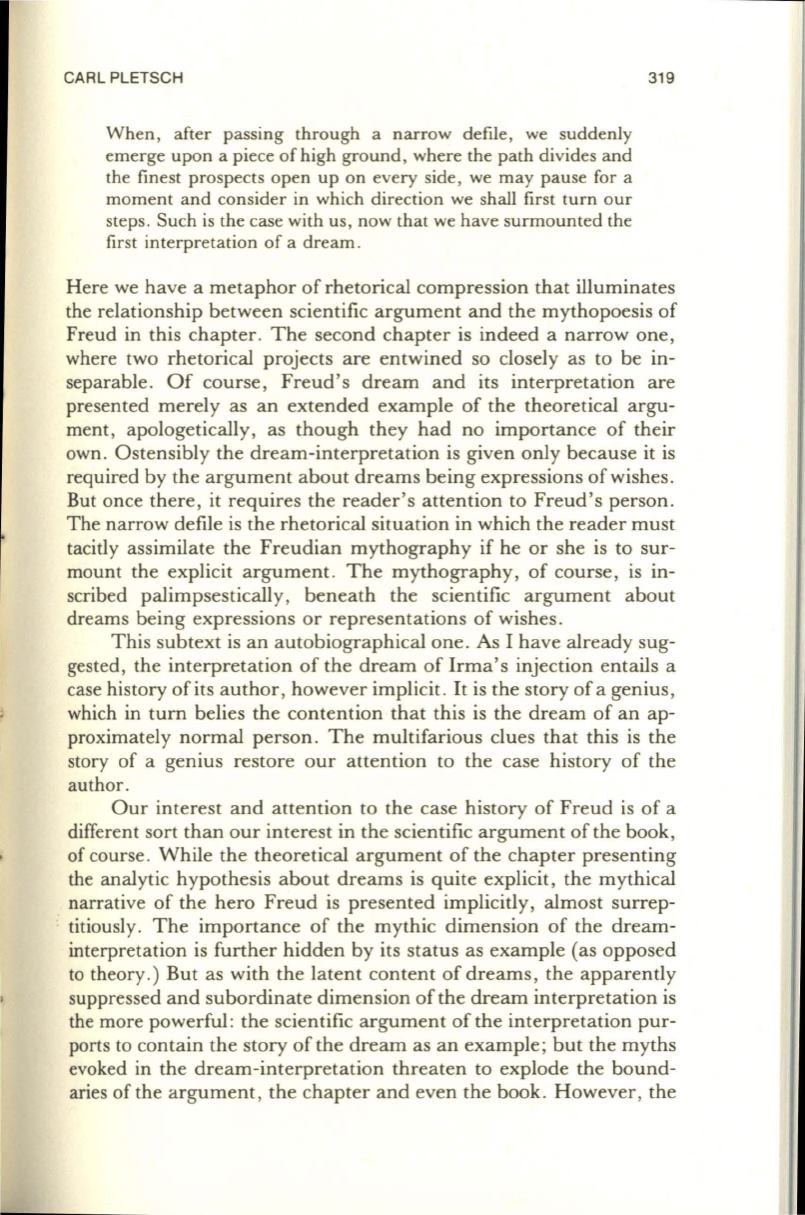
CARL PLETSCH
When, after passing through a narrow defile , we suddenly
emerge upon a piece of high ground, where the path divides and
the finest prospects open up on every side, we may pause for a
moment and consider in which direction we shall first turn our
steps . Such is the case with us, now that we have surmounted the
first interpretation of a dream .
319
Here we have a metaphor of rhetorical compression that illuminates
the relationship between scientific argument and the mythopoesis of
Freud in this chapter. The second chapter is indeed a narrow one,
where two rhetorical projects are entwined so closely as to be in–
separable. Of course, Freud's dream and its interpretation are
presented merely as an extended example of the theoretical argu–
ment , apologetically, as though they had no importance of their
own . Ostensibly the dream-interpretation is given only because it is
required by the argument about dreams being expressions of wishes.
But once there, it requires the reader's attention to Freud's person.
The narrow defile is the rhetorical situation in which the reader must
tacitly assimilate the Freudian mythography if he or she is to sur–
mount the explicit argument. The mythography, of course, is in–
scribed palimpsestically, beneath the scientific argument about
dreams being expressions or representations of wishes .
This subtext is an autobiographical one. As I have already sug–
gested , the interpretation of the dream of Irma's injection entails a
case history of its author, however implicit.
It
is the story of a genius,
which in turn belies the contention that this is the dream of an ap–
proximately normal person . The multifarious clues that this is the
story of a genius restore our attention to the case history of the
author .
Our interest and attention to the case history of Freud is of a
different sort than our interest in the scientific argument of the book,
of course . While the theoretical argument of the chapter presenting
the analytic hypothesis about dreams is quite explicit, the mythical
narrative of the hero Freud is presented implicitly, almost surrep–
titiously . The importance of the mythic dimension of the dream–
interpretation is further hidden by its status as example (as opposed
to theory .) But as with the latent content of dreams, the apparently
suppressed and subordinate dimension of the dream interpretation is
the more powerful : the scientific argument of the interpretation pur–
ports to contain the story of the dream as an example; but the myths
evoked in the dream-interpretation threaten to explode the bound–
aries of the argument, the chapter and even the book. However, the


